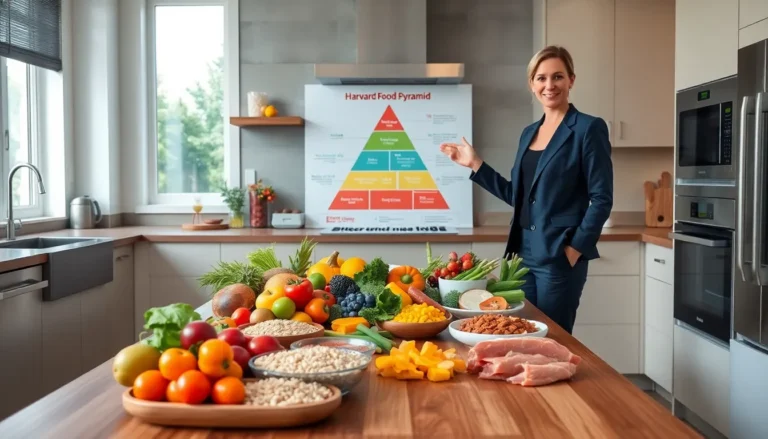Table of Contents
ToggleIn today’s fast-paced world, families are constantly searching for ways to stretch their budgets, especially when it comes to groceries. With rising food prices, finding effective strategies for grocery savings can make a significant impact on a family’s finances. By adopting smart shopping habits and utilizing available resources, families can enjoy healthy meals without breaking the bank.
Understanding the art of grocery savings isn’t just about clipping coupons or waiting for sales. It involves planning, creativity, and a bit of savvy shopping. From meal planning to bulk buying, families can discover various methods to maximize their savings while minimizing waste. This article explores practical tips and tricks that can help families save money at the grocery store, ensuring they get the most value for their hard-earned dollars.
Understanding Grocery Savings Family
Families face the challenge of managing grocery budgets effectively amid rising food prices. Implementing strategic practices enables families to enjoy nutritious meals while minimizing expenses.
The Importance of Budgeting
Establishing a grocery budget serves as the foundation for effective money management. It requires families to track monthly expenses to identify spending patterns. Setting a specific budget amount promotes discipline and prioritizes essential items over non-essentials. Families benefit from a clear budget by reducing impulsive purchases and avoiding financial strain. This structured approach allows families to allocate funds toward healthier options, ensuring well-rounded meals.
Setting Savings Goals
Setting savings goals empowers families to strategize their grocery shopping effectively. Families can determine a realistic target amount to save each month, fostering a sense of achievement. Specific and measurable goals, such as reducing grocery spending by 15% or saving $50 monthly, drive better decision-making. Integrating a reward system for reaching these goals can enhance motivation. Savings goals can inspire families to explore discounts, use coupons, or shop during sales events, ultimately leading to significant financial benefits.
Strategies for Effective Grocery Savings

Families can maximize their grocery savings through strategic planning and savvy shopping techniques. Implementing effective strategies not only reduces expenses but also encourages healthier eating habits.
Meal Planning and Preparation
Meal planning ensures families buy only necessary items, reducing food waste and impulse purchases. Families can follow these steps:
- Plan Weekly Meals: Outline meals for the week, including breakfast, lunch, and dinner.
- Create a Detailed Shopping List: List ingredients based on planned meals to avoid unplanned purchases.
- Incorporate Leftovers: Use leftovers creatively for future meals, such as turning roast chicken into soups or salads.
- Shop Seasonal Produce: Select fruits and vegetables in season for lower prices and higher quality.
- Batch Cooking: Prepare large quantities of meals, freezing extras for quick and easy future meals.
Utilizing Coupons and Discounts
Leveraging coupons and discounts significantly lowers grocery bills. Families should adopt these practices:
- Collect Coupons: Gather coupons from newspapers, online platforms, and store apps.
- Use Store Rewards Programs: Sign up for grocery store loyalty programs to access exclusive discounts.
- Stack Discounts: Combine manufacturer coupons with store discounts for maximum savings.
- Monitor Special Sales: Keep an eye on weekly sales flyers to plan shopping around discount days.
- Leverage Cash-Back Apps: Use apps that provide cashback for grocery purchases, enhancing overall savings.
By integrating these strategies into routine grocery shopping, families can achieve substantial savings while maintaining a healthy diet.
Tools and Resources for Grocery Savings
Utilizing various tools and resources can significantly enhance grocery savings for families. These tools range from digital applications to community programs designed to provide financial assistance and support.
Grocery Store Apps and Websites
Grocery store apps and websites offer numerous features that streamline the shopping experience.
- Price Comparison: Many apps allow families to compare prices across different stores, ensuring they find the best deals.
- Digital Coupons: Apps often provide access to exclusive digital coupons, allowing families to save more on essentials.
- Shopping Lists: Creating and storing shopping lists within these apps helps families stay organized and focused while shopping.
- Loyalty Programs: By joining store loyalty programs, families can earn points and discounts on future purchases, maximizing savings.
- Weekly Ads: Accessing digital weekly ads helps families identify sales and promotions, enabling smarter purchasing decisions.
Examples include popular apps like Ibotta, Flipp, and Fetch Rewards, which can work in conjunction with in-store rewards programs to amplify savings.
Community Resources and Programs
Community resources and programs play a vital role in supporting grocery budgets.
- Food Banks: Local food banks provide food assistance to families in need, ensuring access to healthy meals without financial strain.
- Nutrition Assistance Programs: Programs like SNAP offer financial support for purchasing nutritious food and often include nutrition education.
- Cooking Classes: Community organizations frequently offer cooking classes that teach budgeting and meal preparation skills, promoting cost-effective eating.
- Community Gardens: Participating in or accessing fresh produce through community gardens allows families to save on grocery bills while enjoying homegrown food.
- Local Coop Programs: Joining local cooperatives can provide discounts on bulk purchases, further lowering grocery costs for families.
Engaging with these community resources not only assists with immediate food needs but also empowers families with skills and knowledge to improve their financial health over the long term.
Common Mistakes to Avoid
Families often encounter pitfalls that hinder effective grocery savings. Recognizing these mistakes and adjusting shopping habits can lead to better financial outcomes.
Impulse Buying
Impulse buying remains a significant barrier to grocery savings. Families frequently purchase items not on their grocery list, drawn by attractive displays or promotions. This behavior can inflate overall spending and lead to food waste. Establishing a strict shopping list and adhering to it helps families focus on essential items. Implementing a waiting period, such as 24 hours, before making non-essential purchases can also reduce impulse buys.
Neglecting Store Policies
Neglecting store policies can result in missed savings opportunities. Many grocery stores have specific policies regarding price matching, return policies, and coupon usage. Families should familiarize themselves with these guidelines to make the most of available discounts. For example, some stores allow price matching with competitor ads, which enhances savings. Additionally, understanding the limitations or expiration dates of coupons can prevent disappointment at checkout. By utilizing store policies effectively, families can maximize their grocery budget.
Grocery savings for families isn’t just about cutting costs; it’s about creating sustainable habits that lead to long-term financial health. By implementing strategies like meal planning and utilizing technology, families can navigate the challenges of rising food prices effectively.
Establishing a grocery budget and setting savings goals fosters discipline and encourages smarter shopping practices. Engaging with community resources further enhances these efforts, providing both immediate support and valuable skills for the future.
With the right mindset and tools, families can enjoy nutritious meals without breaking the bank, paving the way for a healthier lifestyle and greater financial stability.







